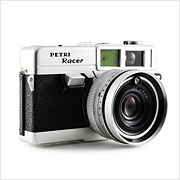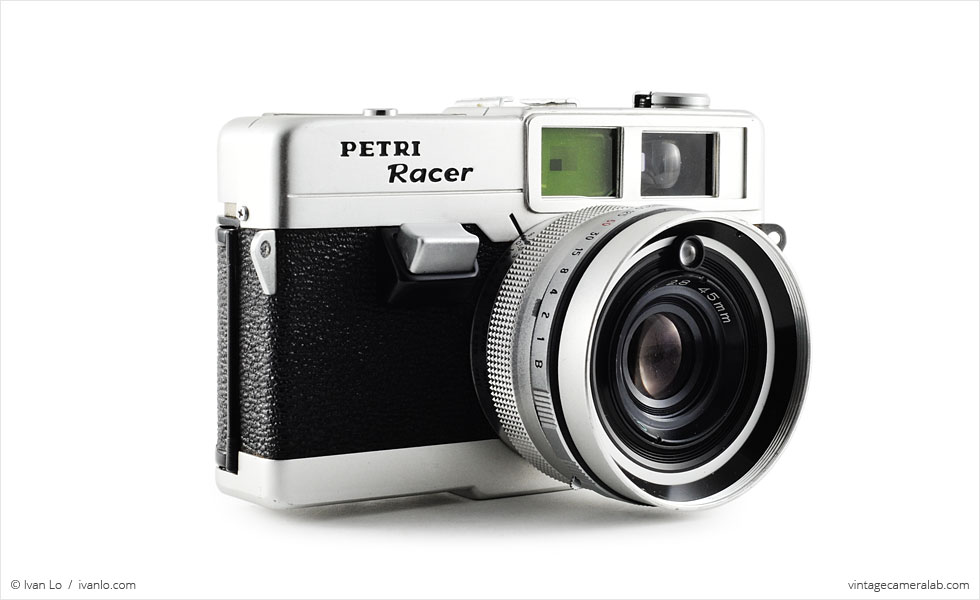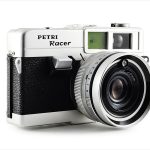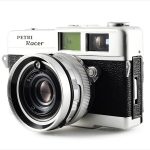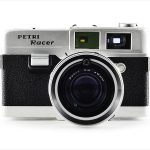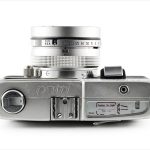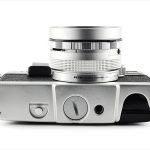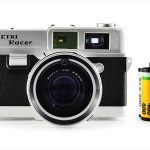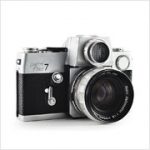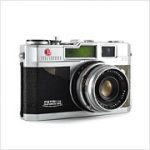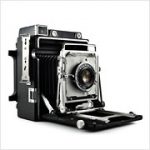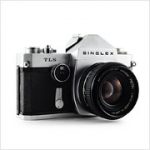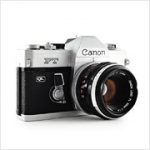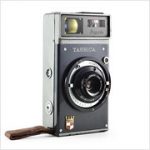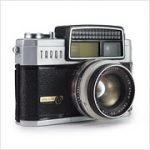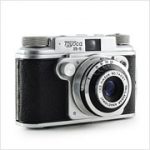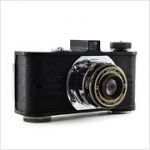Petri Racer Specifications
| Manufacturer: | Petri Camera Company, Inc. |
| Origin: | Japan |
| Made in: | Japan |
| Introduced: | 1966 |
| Type: | Rangefinder |
| Format: | 135 Film |
| Dimensions: | 12.8 x 8.4 x 7.5 cm |
Petri Racer Overview
The Petri Racer is a fixed-lens rangefinder introduced by Petri Camera Company, Inc. (formerly known as Kuribayashi Shashin Kogyo K.K.) in 1966. Similar to other Petri cameras like the 2.8 Color Super, the Racer features the signature “GREEN-O-MATIC” viewfinder which visually sets it apart from other Japanese fixed-lens rangefinders.
The first thing that struck me about the Racer was its unusual shutter button. Located on the front plate of the camera, the button is rather large, its placement surprisingly ergonomic,threaded shutter cable socket, and the release pleasantly soft. Similarly, the frame advance lever sits nice and flush with the back of the camera until needed and is a pleasure to use. Most of the other controls can be found on the lens barrel which allows the top plate to accommodate the film rewind knob, cold shoe, threaded shutter release socket, frame counter, and a guide for the cadmium sulfide light meter housed in the inconspicuous little bubble located above the Petri 45mm f/2.8’s front element.
A focus ring with protruding knob can be found at the base of the lens barrel while the knurled ring just in front of it is actually used to select the shutter speed. Nestled within a cut out portion at the 4 o’clock position of the shutter speed selector is a flash sync socket which can be activated by a thin metal switch at the 10 o’clock mark located just above the self-timer lever at 7:00. The forwardmost dial on the lens barrel is used to select both the film speed as well as the shutter speed with a range of 1 to 1/500 seconds, and Bulb.
My wife bought this stylish camera for about $10 when we were in college. After burning a few rolls of film with it, she graduated and it got packed away where it remained until we cleared out the storage unit years later. Apparently her taste in cameras is rivaled only by her taste in men.
Find your very own Petri Racer on eBay.
McKeown, James M. and Joan C. McKeown’s Price Guide to Antique and Classic Cameras, 2001-2002. (Grantsburg, WI, USA: Centennial Photo Service, 2001), p 403.
